Analyze Fatigue Damage
According to Miner’s rule of damage, all structures experience fatigue when repeatedly exposed to significant stress levels, and fatigue accumulates over time.
We can calculate the relative damage the product experiences in a defined period with the FDS computation. The FDS plot in ObserVIEW displays a product’s fatigue for a set frequency range. It is a visualization and analysis tool that shows the amount of fatigue damage a product will see whether in the lab or the field.
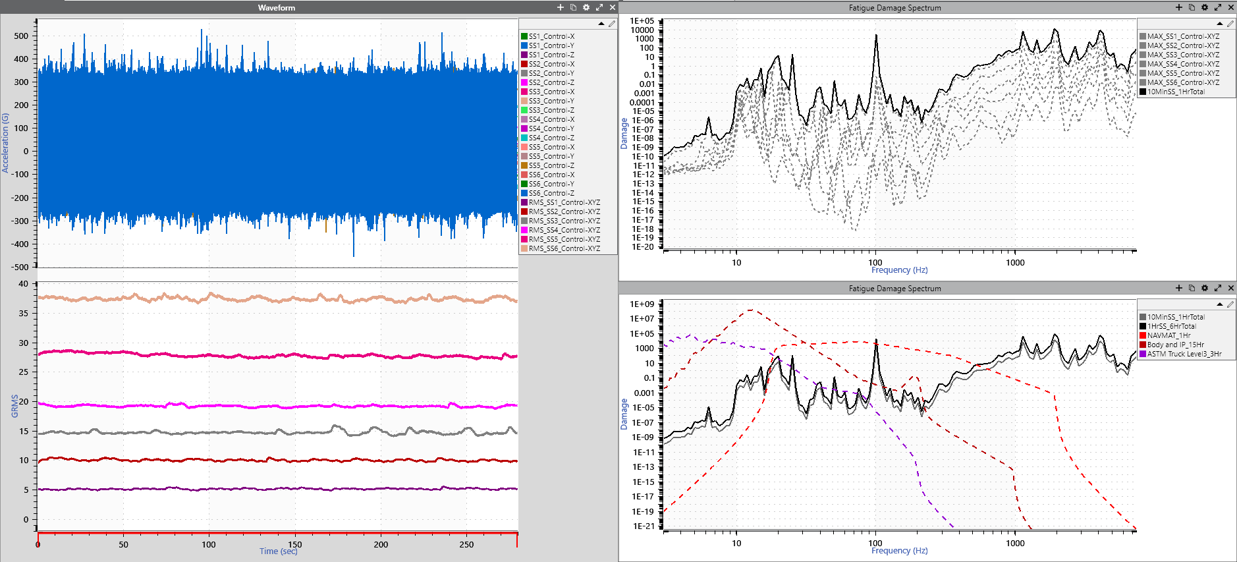
Comparison of test data to test specifications.
The FDS helps engineers confidently design tests that will not inflict fatigue damage or reach the breaking threshold (unless desired).
Use the FDS plot to:
- Compare multiple failure runs of a product
- Compare recorded data to specifications
- Determine if your current testing is valid or if a product is under or over-tested
Generate a Random Test Profile
For vibration testing, engineers can use the FDS to create a random test profile that is the damage equivalent to the recorded environment.
ObserVIEW converts the FDS into a power spectral density (PSD) using Henderson-Piersol’s fatigue calculation method. The result is a single PSD profile for a recorded time waveform.
An FDS test spectrum reproduces the effects on a DUT identical to the original data using random vibration and less time. The Test Spectrum trace displays a PSD profile that produces the same fatigue damage as the current time selection of the FDS trace.
Optionally, apply Kurtosion® Time Compression to use the patented Kurtosion test acceleration and reduce testing time without using more energy.
Projected Fatigue Damage
Generate a random PSD test profile with projected fatigue damage. Similar to peak hold, the software displays the maximum value of the underlying trace compared to previous data. Once the PSD reaches the desired fatigue damage, copy the PSD to VibrationVIEW to run the profile as a test.
The Projected option displays an FDS projection using a target lifetime or target life passes. It shows how much damage the device under test would incur if tested for the given period/passes.
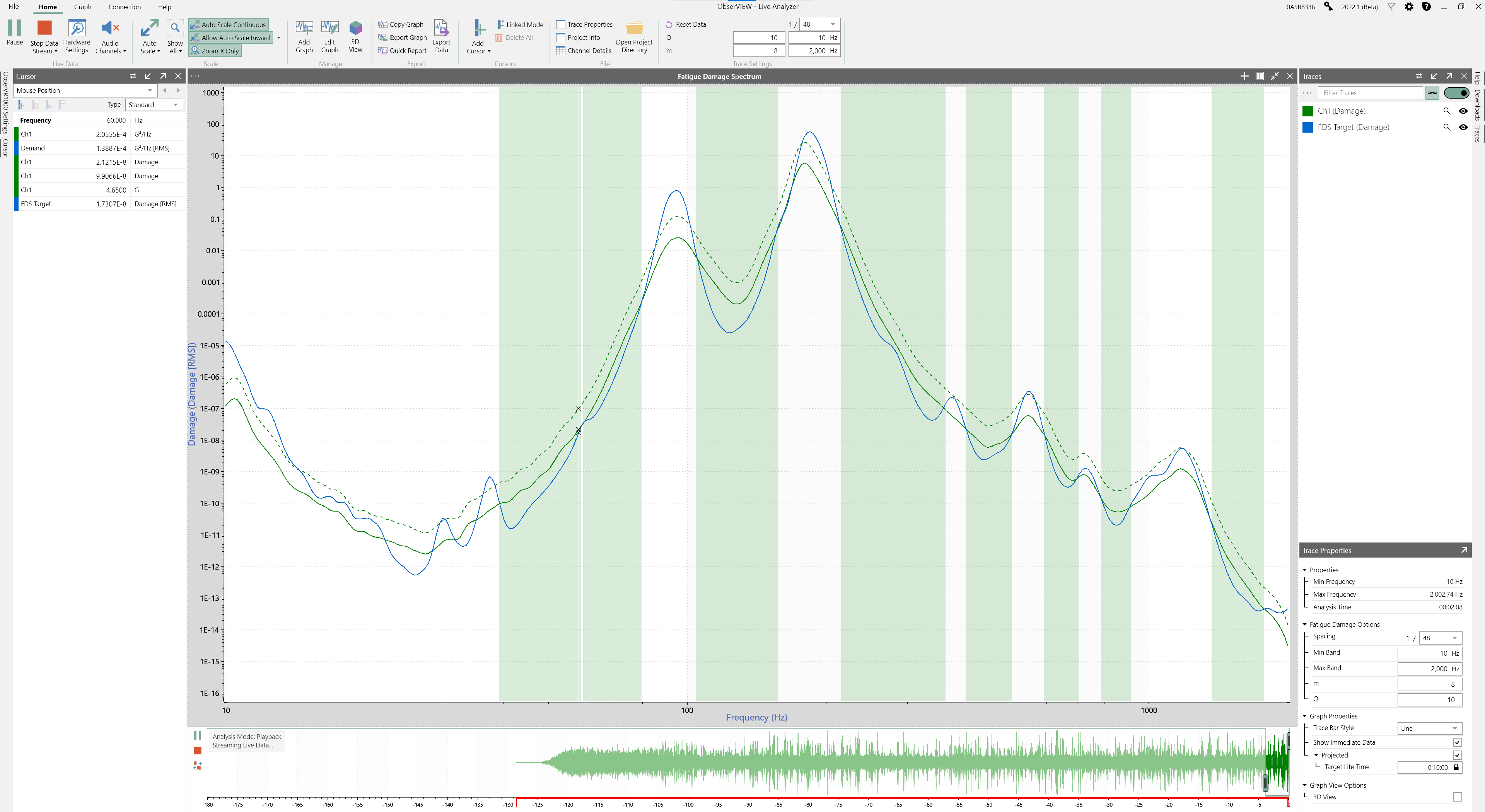
Live FDS: Real-Time Fatigue Measurement
Real-time fatigue measurement helps identify when fatigue levels of a test profile are achieved compared to a field recording.
Review the live stream of a random test to determine when the test levels meet the reference data. Perform the analysis live or in playback mode and identify how long it takes to reach real-life fatigue levels.
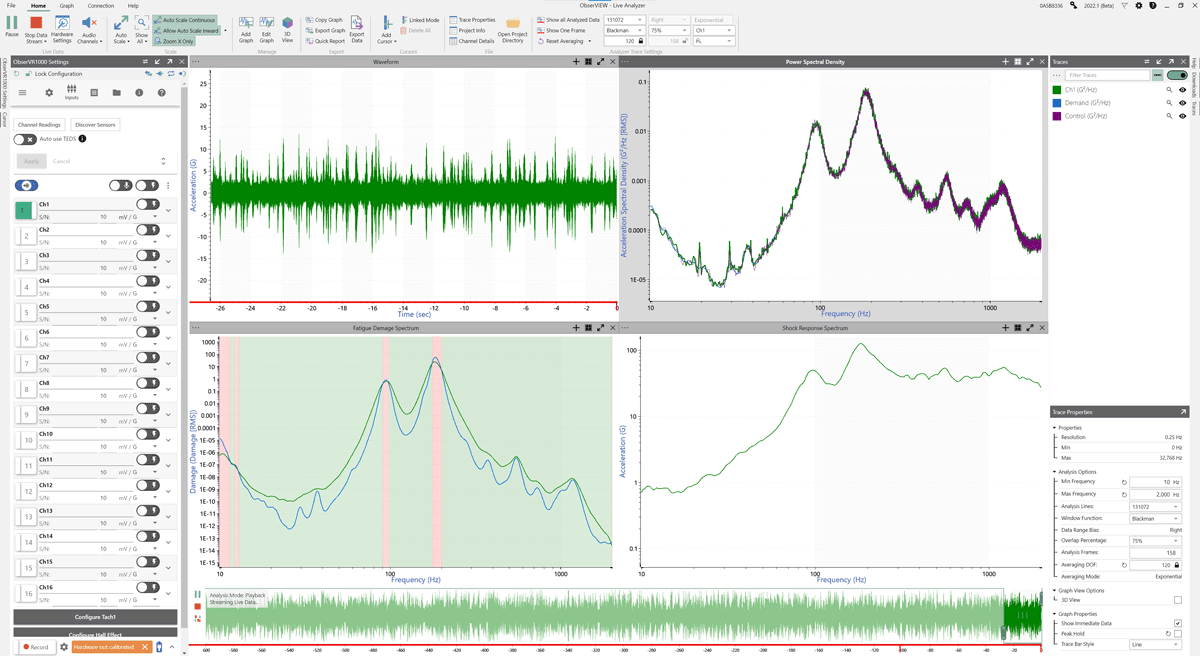
To run Live FDS while a test is running, the technician sets up an FDS test in VibrationVIEW and uploads a reference profile in the connected ObserVIEW software. As the FDS test runs in VibrationVIEW, the ObserVIEW FDS software collects frames of data. The software uses a color scale to indicate whether the fatigue is above or below the reference value.
With the FDS Live feature you can:
- Determine Mounting Location: Review the table’s distribution of potential damage to determine where to mount the product.
- Verify Test Adequacy: Compare your test’s stress levels to a reference value. In live or playback mode, confirm that the profile meets or exceeds the reference demand.
- Predict Product Fatigue: Display how much damage the device under test would incur if tested for a target lifetime.
Download PDF
Estimate HALT/HASS Fatigue
The Live FDS feature allows technicians to quantify the damage at the various points of a HALT/HASS table. They can view a live stream of data to determine when the product has accumulated sufficient fatigue at the frequencies of interest or when the test levels have met or exceeded a reference value. Learn more.
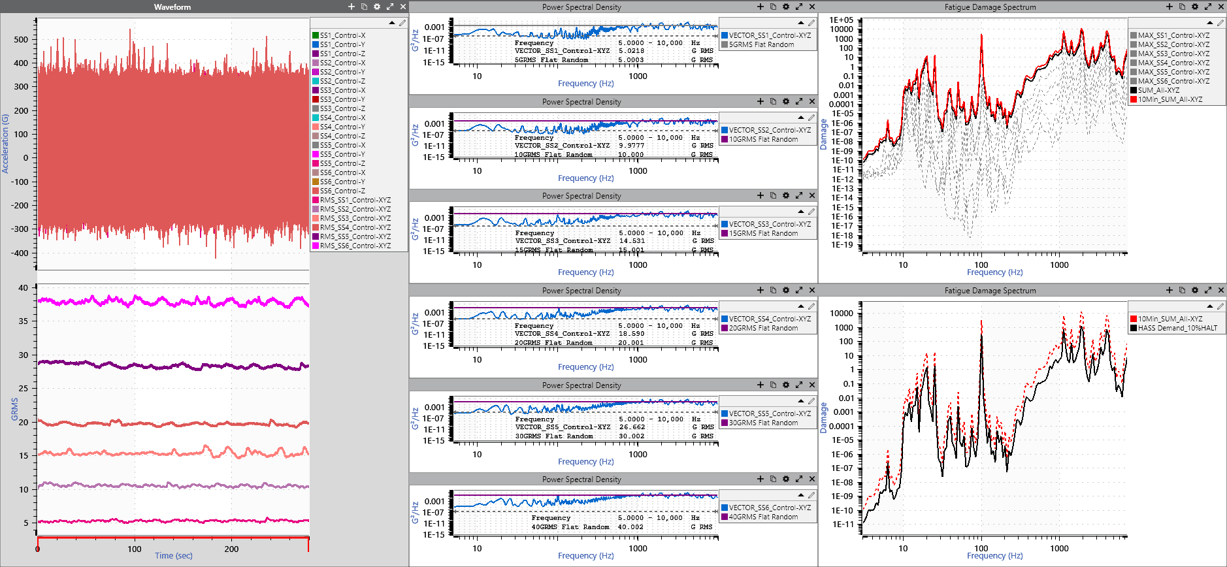
Calculation of HASS demand from HALT data.
Rapid failure mode precipitation testing
Rapid failure mode precipitation testing (RFMPT™) is a test to failure that engineers can use at any time throughout their product development cycle, from proof of concept to post-production verification and validation. As a test-to-failure, RFMPT demonstrates a product’s robustness to harsh end-use environments and customer use. As an integrated process of a product development plan, it is an efficient and cost-effective way to track reliability growth.
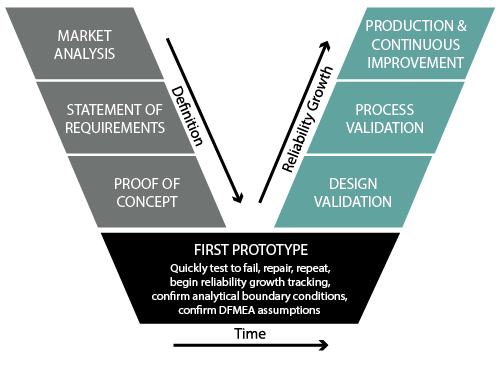 RFMPT can identify design weaknesses at any point in the product development cycle, whether early in the concept phase, to uncover manufacturing defects before full production, or for continuous improvement after the product is in the field. Learn More.
RFMPT can identify design weaknesses at any point in the product development cycle, whether early in the concept phase, to uncover manufacturing defects before full production, or for continuous improvement after the product is in the field. Learn More.





